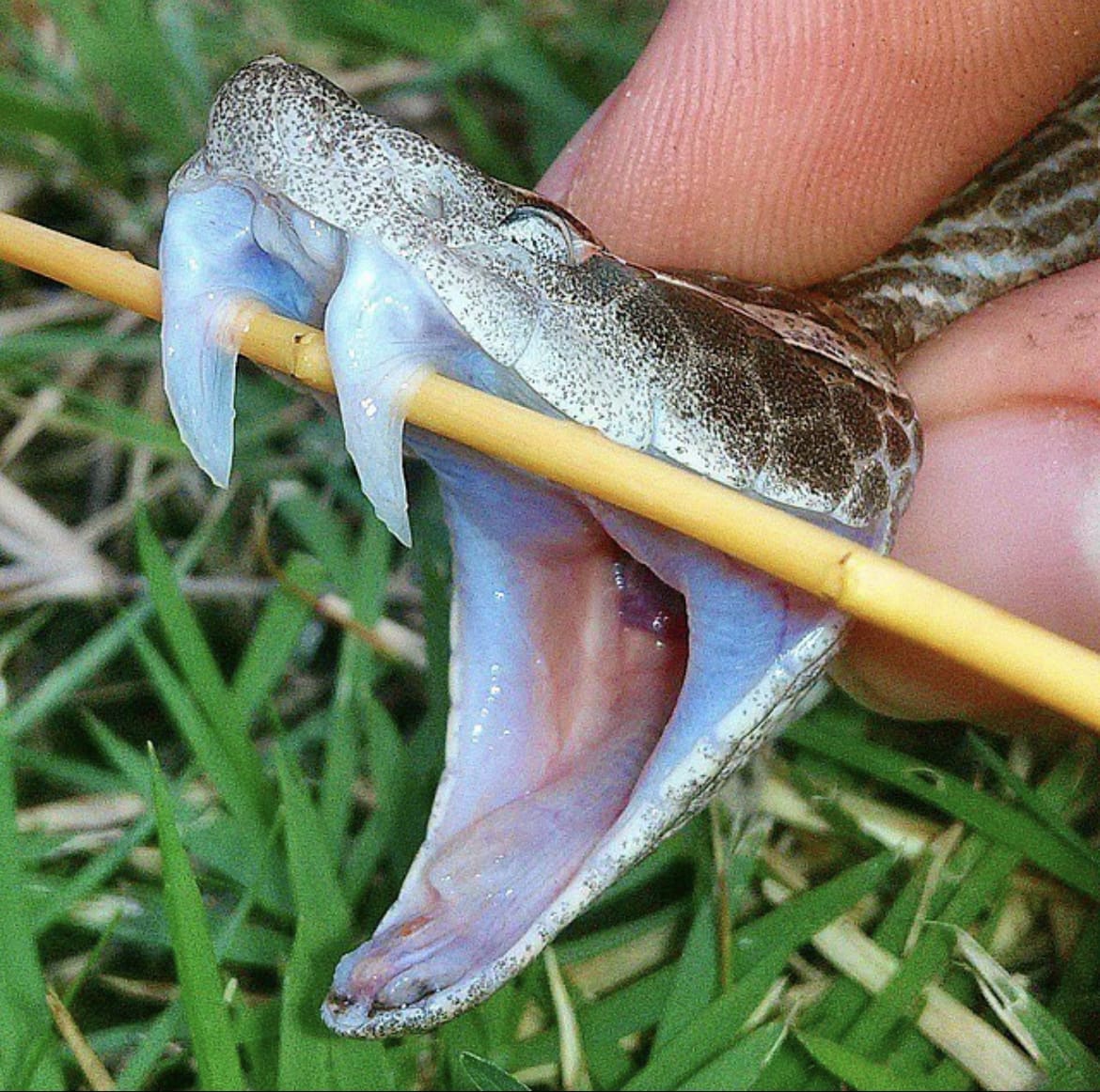How Snake Fangs Evolved to Fit Their Prey
Snake fangs are nature’s precision tools, forged over millions of years of evolution. These specialized teeth have helped snakes dominate as predators, enabling them to inject venom, grip prey, or pierce with deadly accuracy. But these fangs aren’t just weapons; they’re blueprints of adaptation, each design tailored to a snake’s environment and diet.
Understanding the evolution of snake fangs offers a glimpse into the intricate relationship between predators and prey. It reveals how ecological pressures and survival needs shape some of nature’s most remarkable adaptations.
For snakes, their fangs are the ultimate tools of survival, honed by time and necessity.

The Anatomy of Snake Fangs
What Are Snake Fangs?
At their simplest, snake fangs are specialized teeth. They serve as weapons, feeding aids, and survival tools.
Unlike ordinary teeth, fangs are adapted to penetrate deeply into prey, deliver venom, or hold prey firmly.
These structures are central to how snakes hunt and feed, offering them a unique advantage in the animal kingdom.
Different Fang Types
There isn’t a one-size-fits-all design for snake fangs. Over time, snakes have developed distinct types, each serving a specific purpose.
- Hollow Fangs: These needle-like fangs are found in venomous snakes like vipers. They’re designed to inject venom directly into prey, acting like hypodermic needles.
- Grooved Fangs: Common in some colubrids, these fangs have grooves along their length that guide venom into prey during a prolonged bite.
- Solid Fangs: Found in non-venomous snakes, these lack venom-delivery mechanisms but excel at gripping prey tightly.
Each type reflects the balance between the predator’s needs and the challenges posed by its environment and prey.
Read Next: The Ten Most Venomous Snakes in Australia

Evolutionary Origins and Adaptation
From Teeth to Fangs
The evolution of snake fangs began with basic, non-specialized teeth. Early snakes, like their reptilian ancestors, had rows of uniform teeth used for gripping prey.
Over millions of years, some of these teeth evolved into specialized structures. Venom glands developed alongside these changes, turning ordinary teeth into efficient delivery systems for venom.
As snakes spread across diverse habitats, environmental factors shaped their fangs. In dense forests, for example, vipers developed retractable, hollow fangs that could inject venom deeply into mammals.
In open deserts, cobras evolved shorter, fixed fangs for rapid strikes against swift-moving prey.
Adaptive Radiation
Adaptive radiation—where species diversify rapidly to exploit different ecological niches—played a key role in the evolution of snake fangs.
This process allowed snakes to evolve fangs suited to their prey and surroundings. Each lineage developed its own unique approach to hunting, with fang design evolving in tandem.

Fang Morphology and Diet
Fang Shapes and Their Prey
A snake’s fangs tell the story of its diet and hunting strategy. Long, hollow fangs are perfect for delivering venom into large, warm-blooded prey, while shorter fangs are ideal for quick strikes.
Grooved fangs work well for smaller prey that doesn’t require immediate immobilization.
Case Studies
- Vipers: With their long, hinged fangs, vipers excel at injecting venom deeply. This design is crucial for their ambush-style hunting, where prey must be subdued quickly and efficiently. The Gaboon viper, for instance, has fangs that can grow up to two inches—the longest of any snake.
- Elapids: Cobras and mambas use short, fixed fangs for rapid, successive strikes. Their venom acts quickly, paralyzing prey before it can escape. This is essential for hunting in open environments where speed matters.
- Colubrids: While many colubrids are non-venomous, some, like the boomslang, have grooved fangs. These allow for a slower venom delivery system, effective against smaller or resistant prey.
The diversity of snake fangs illustrates how form follows function, with each design optimized for a specific predatory style.
The Ecological Ripple Effect
Predator-Prey Relationships
The evolution of snake fangs isn’t just about the snakes—it’s about the ecosystems they inhabit. By efficiently subduing prey, snakes play a vital role in regulating populations. This control prevents overpopulation of certain species, which can lead to crop damage, disease, and ecological imbalance.
For example, vipers in forest ecosystems keep rodent populations in check, indirectly protecting plant life and reducing the spread of rodent-borne diseases. This balance demonstrates how integral snakes are to the environments they inhabit.
Biodiversity and Fang Variation
Fang specialization also contributes to the incredible biodiversity within the snake family. With over 3,000 snake species, each with unique adaptations, snakes fill a wide variety of ecological niches. Their fangs are a key part of this success, allowing them to hunt everything from insects to mammals to other reptiles.
Without these specialized tools, snakes wouldn’t be able to maintain their diverse roles in ecosystems. The result is a delicate balance where predators and prey constantly adapt to each other’s changes, driving evolution forward.

When Humans Meet Fangs
Snakebites
For humans, snake fangs are both fascinating and dangerous. Venomous bites vary in severity depending on the snake’s fang structure and venom composition.
- Viper Bites: Vipers’ long fangs deliver venom deep into tissue, often causing severe swelling and tissue damage.
- Elapid Bites: With shorter, fixed fangs, elapids strike quickly and deliver neurotoxic venom that can cause paralysis or respiratory failure.
- Colubrid Bites: Although many colubrids are harmless, those with grooved fangs, like the boomslang, can deliver venom that leads to internal bleeding if untreated.
Medical and Safety Applications
Research into snake fangs has led to advancements in medical treatments. Antivenoms are now tailored to specific venom types, improving survival rates. Protective gear, like snake-proof boots, is also designed with fang structure in mind.
Understanding fangs helps scientists predict the severity of bites and develop better ways to treat them. While human-snake encounters can be dangerous, increased knowledge makes coexistence safer.
